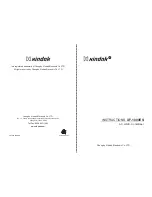
•
Integration of pulsating binary signals to obtain a continuous signal, for example, output
of the loss-of-excitation function (out-of-step protection) or reverse power protection
•
Extension of short I/P signals (pulse prolongation)
•
Simple time delay
5.12.2
Features
GUID-F97DB054-B13E-4E30-85DF-4F315988DC2F v1
•
Input channel and blocking input assignable to:
•
binary input signals
•
protection function output signals
•
Input channel and blocking input can be inverted.
•
Adjustable reset time
•
2 types of time delay:
•
Integration: Only the time during which the input signal is at logical
1 counts at the
end of the time delay.
•
No integration: The total time from the instant the timer starts until it is either reset
or expires counts.
5.12.3
Inputs and outputs
5.12.3.1
CT/VT inputs
GUID-54D2B968-A98D-438A-935B-307DBC75FF29 v1
•
None
5.12.3.2
Binary inputs
GUID-43DB6E1E-779C-4DA4-9640-8ADC5AEF7422 v1
•
Input signal
•
Blocking
5.12.3.3
Binary outputs
GUID-E3343A2A-D0CE-496F-BAE3-E6B1D30F077E v1
•
Pick-up
•
Tripping
5.12.3.4
Measurements
GUID-705F1915-B394-44BA-BAB0-C33D582D02EE v1
•
Time from the instant the timer starts
5.12.4
Function settings
GUID-42EEB88B-C55F-4D79-BF31-2427C9BD32E2 v1
Table 95: Delay function - Settings
Text
Unit
Default
Min
Max
Step
ParSet 4..1
P1
(Select)
Trip-Delay
s
01.00
00.00
300.00
0.01
Reset-Delay
s
00.01
00.00
300.00
0.01
Table continues on next page
1MRK 505 406-UEN B
Section 5
Bay protection functions
Bay protection functions REB500
175
Technical manual
© Copyright 2019 ABB. All rights reserved













































